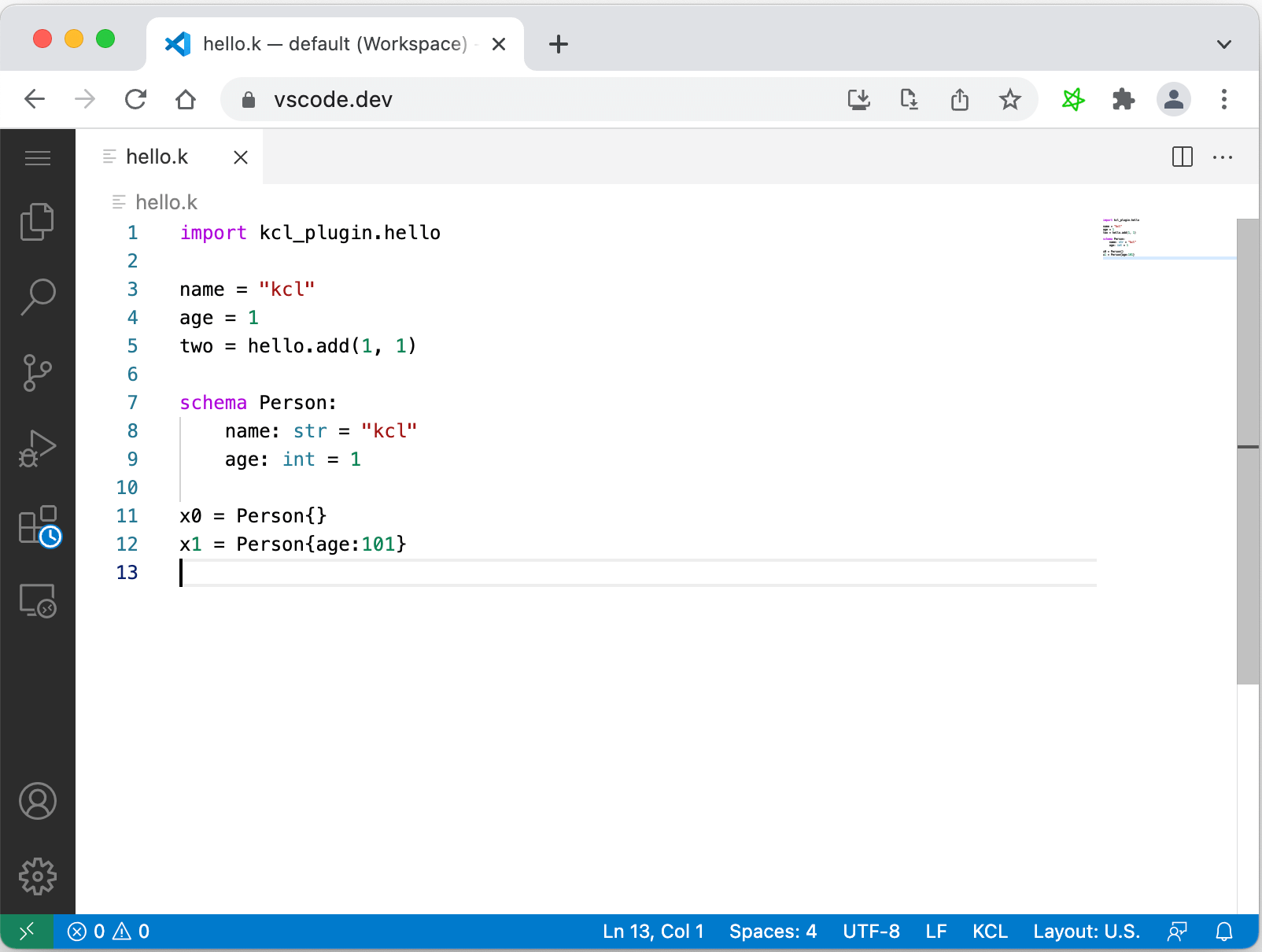Installation
1. Install KCL
From the Binary Releases
Each release of KCL includes various OSes and architectures. These binary versions can be manually downloaded and installed from Github and add {install-location}/kclvm/bin to the environment PATH.
MacOS & Linux
export PATH=$PATH:{install-location}/kclvm/bin
Windows
$env:PATH += ";{install-location}\kclvm\bin;"
Homebrew (MacOS)
brew install kcl-lang/tap/kclvm
From Python3
Install kcl through the python3 and pip (python3 requires 3.7.3+).
python3 -m pip install kclvm --user
Add an alias for the kcl command (optional).
alias kcl='python3 -m kclvm'
From Docker
- Command
docker run --rm -p 8080:8080 -it kusionstack/kclvm
- Update image
docker pull kusionstack/kclvm
Note
⚠️ For all the above operating systems and installation methods, if you want to use KCL Python plug-in, you need to ensure that Python 3.7+ is installed and add the python3 command to your PATH environment variable.
To avoid the GLIBC version being too low, for lower versions of Linux such as Centos7, you can visit Github to find the release of kclvm-centos and download and install it.
2. Install KCL IDE Extension
VS Code
There are VS Code extensions for both VS Code and VS Code Web IDE.
The KCL extension for the local VS Code IDE can be download from here and it provides more rich language support for the KCL language such as highlighting, auto-completion, quick info hover and code navigation, etc.
The VS Code Web IDE can be reached through the browser, and you can search and install the KCL for vscode.dev in the VS Code Extension tab. And here's the syntax highlighting view you'll get:

IntelliJ IDEA
Download the distribution from here and in IntelliJ IDEA, click Preference -> plugins -> install Plugin from Disk... -> select kcl-idea-plugin zip -> restart IDE. This plugin requires the IntelliJ IDEA 2020.2+